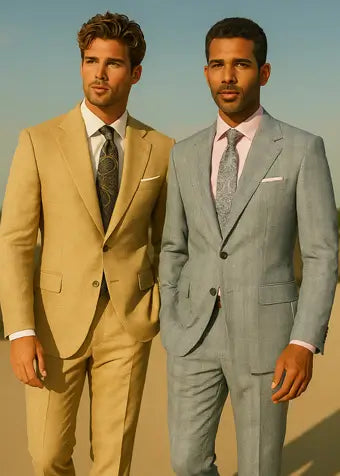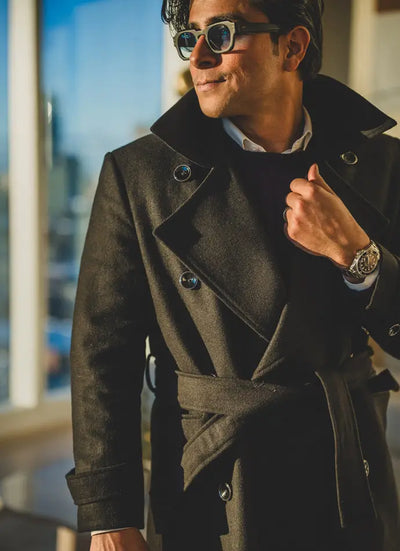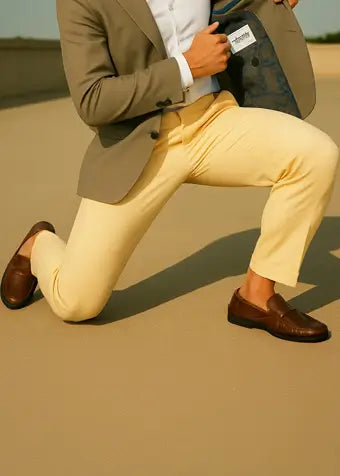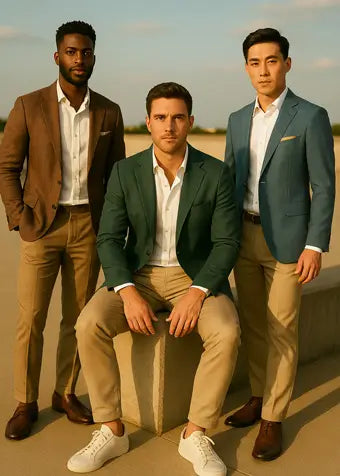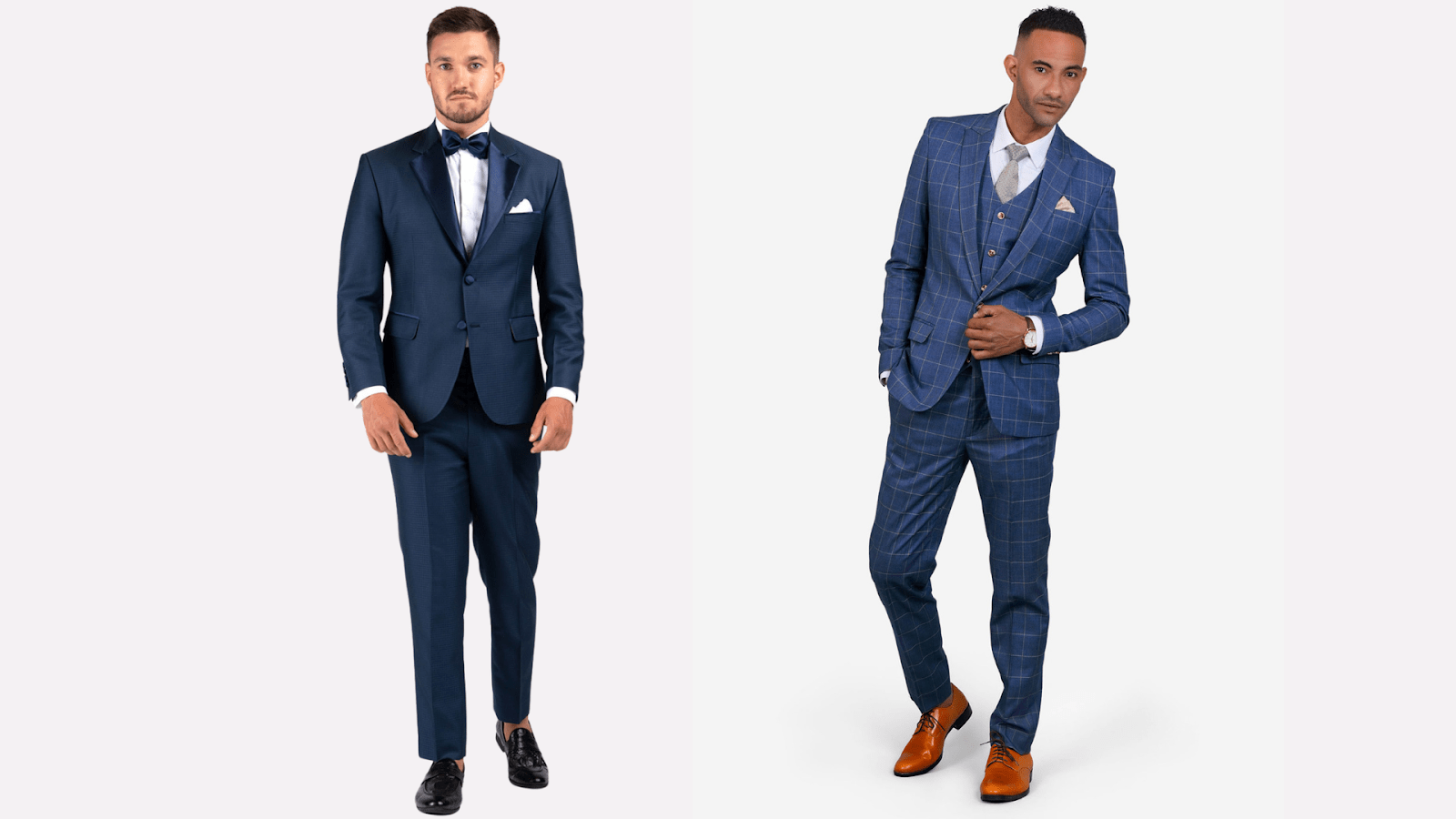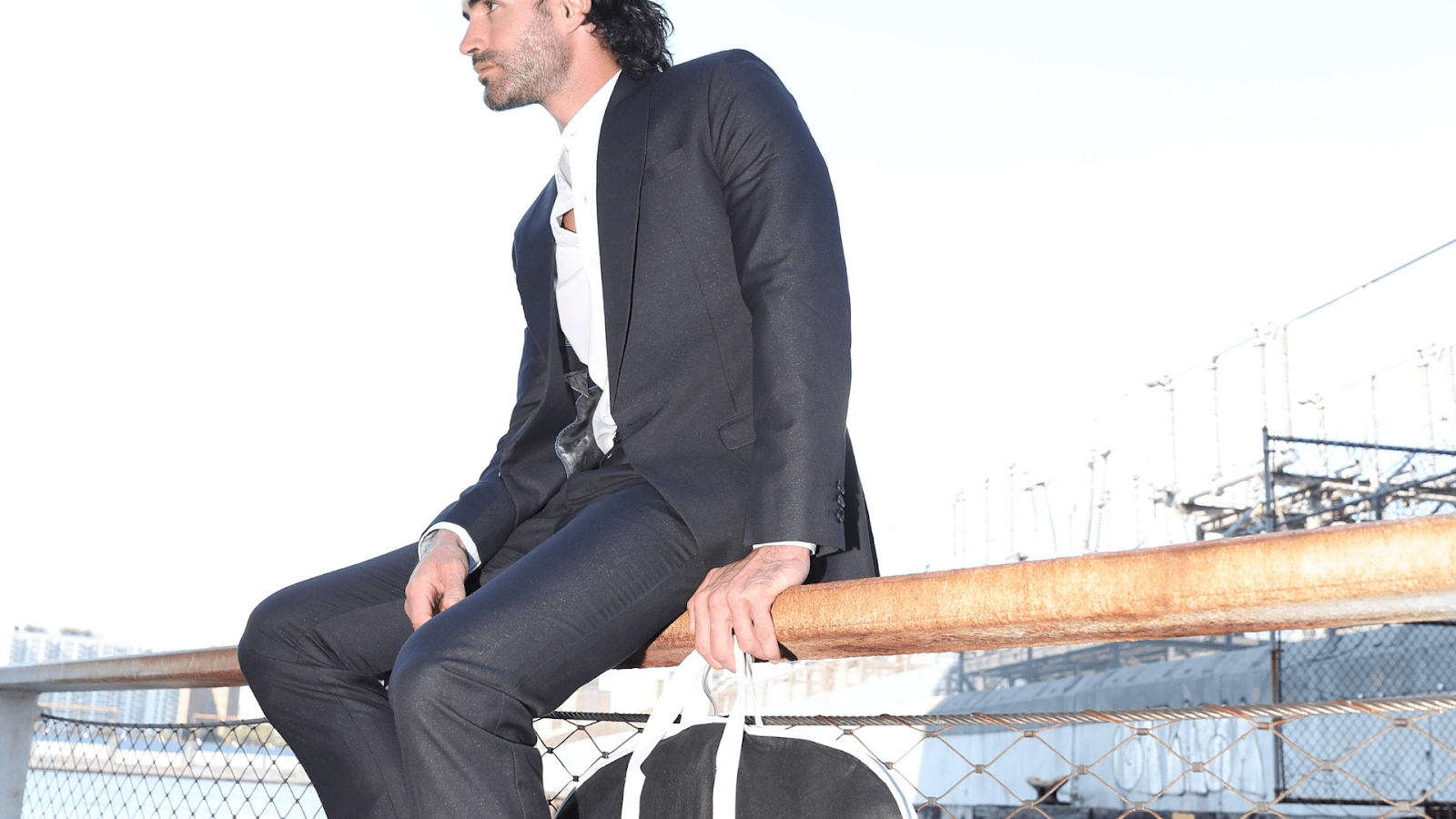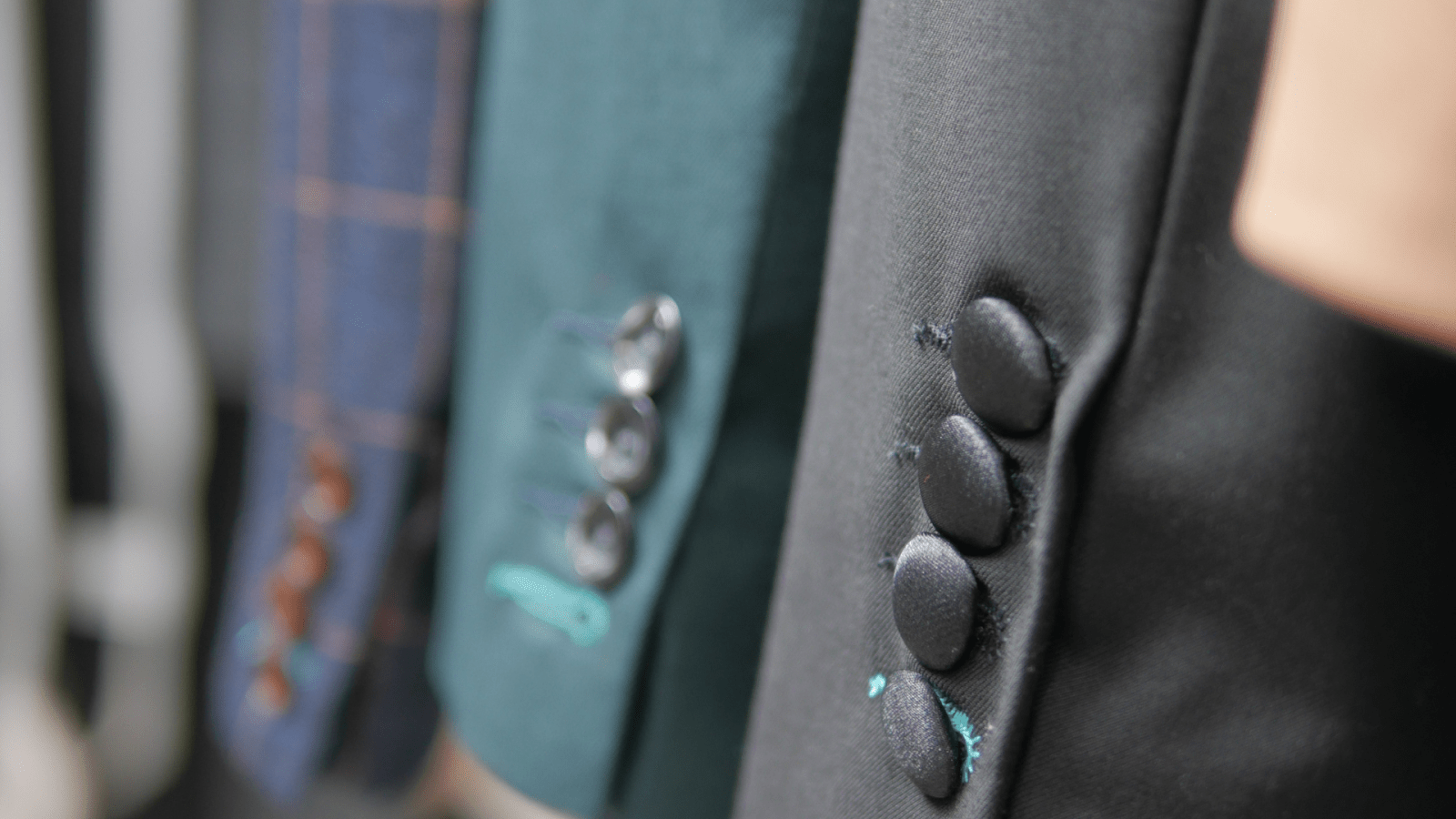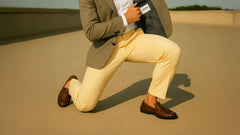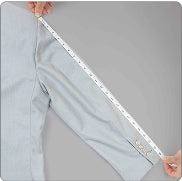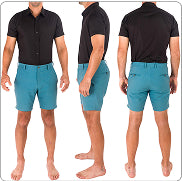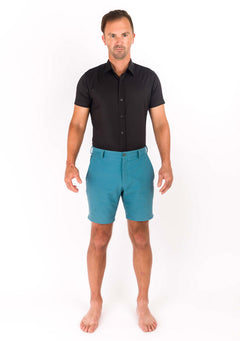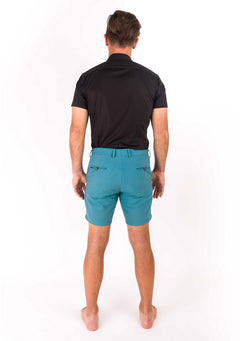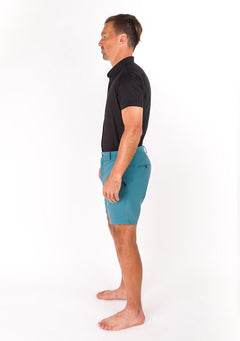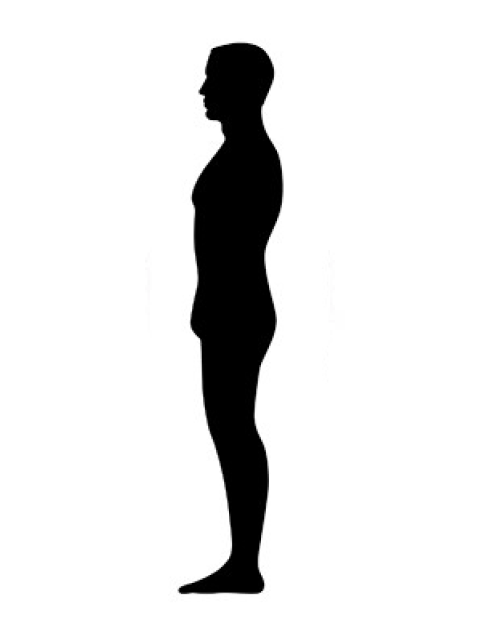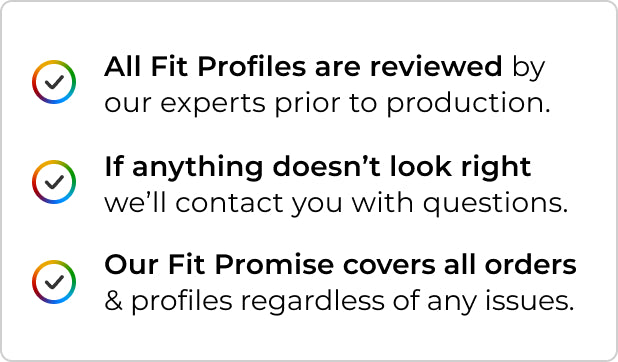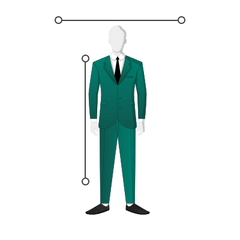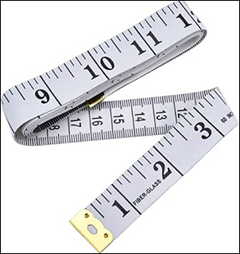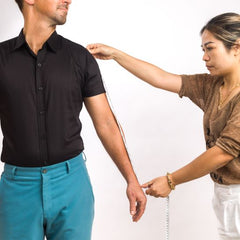
How To Wear And Style A Suit
Contents
- How A Suit Should Fit: From Shoulders To Break
- Choosing The Right Suit For The Occasion
- Understanding Suit Fabrics And Materials
- How To Wear A Suit Casually Without Looking Overdressed
- Shirt And Tie Combos That Actually Work
- Footwear That Completes The Look
- Accessories That Work With (Not Against) Your Suit
- Final Thoughts
- Frequently Asked Questions About How To Wear And Style A Suit
Key Takeaways:
- Fit is Fundamental: The foundation of any great suit look lies in a perfect fit, from shoulder seams to trouser breaks. Proper tailoring ensures a sharp silhouette that elevates your confidence and style.
- Suit Style Should Match Occasion: Choose your suit style, fabric, and color based on the event’s formality—classic wool for business, linen or cotton for casual settings, and tuxedos for black-tie affairs ensure you’re always appropriately dressed.
- Accessorize Thoughtfully: Pair your suit with complementary shirts, ties, shoes, and minimal accessories to create a polished, cohesive look without overpowering your outfit.
Wearing a suit used to come with a rulebook. Now, it comes with options. The modern suit isn’t just for boardrooms or black-tie events—it’s your style wingman for everything from rooftop weddings to late-night dinners. But pulling it off isn’t about being flashy. It’s about fit, fabric, and the subtle confidence that comes from knowing how to wear a suit your way.
At Sartoro, we make suits that move with you, not against you. Tailored for the pace of city life—fast, functional, and always sharp—our pieces are built to keep up, whether you're layering over sneakers or lacing up Oxfords.
In this guide, we’ll walk you through how to wear and style a suit without trying too hard. From the fundamentals of fit to the details that make it yours, you’ll get everything you need to look sharp and stay comfortable—no matter the setting.
How A Suit Should Fit: From Shoulders To Break
Perfecting the fit is the cornerstone of looking sophisticated and feeling confident in a suit. Even the highest-quality fabric or the most striking color choice will fall flat if the fit isn’t right. Knowing precisely how each key area should sit on your body—immaculately tailored from shoulders to trouser break—is key to wearing a suit.
Shoulders: The Architectural Foundation
The shoulders are the framework on which the entire suit is built. The shoulder seam should end naturally at the edge of your own shoulder, not before, not extending over. This creates a sharp silhouette and prevents rippling or awkward bunching in the sleeves. An ill-fitted shoulder is glaringly obvious and, unfortunately, one of the most complicated issues to fix after the fact.
Chest And Torso: Structured, Not Suffocating
A suit’s chest should follow the contours of your torso without pulling or sagging. There should be enough room to slip a flat hand between your shirt and the jacket front when buttoned. Excess fabric creates a boxy effect, while a tight fit will cause the lapels to bow, compromising the suit’s elegance.
Jacket Length: Proportional Precision
A suit jacket should strike a balance that accentuates your proportions. The hem typically falls right around the midpoint of your hand when your arms are relaxed at your sides, covering the seat of your trousers. Too short, and the jacket looks abrupt; too long, and the silhouette becomes unflattering.
Sleeves: Showing The Right Cuff
Suit jacket sleeves should allow a sliver—about a quarter to a half inch—of your shirt cuff to peek through. This attention to detail highlights your shirt and meticulous approach to dressing. Sleeves that swallow your shirt cuffs or expose too much of your forearm instantly throw off the ensemble.
Trousers: Waist, Seat, And Break
Trouser fit is just as crucial as the jacket. The waistband should sit comfortably at your natural waist—neither constricting nor slipping. The seat of the trousers ought to be smooth and unwrinkled, following your natural shape. The “break”—where the fabric rests atop your shoes—deserves special consideration.
A slight break, where the trousers gently crease above the shoes, provides a contemporary yet classic finish. Avoid heavy pooling or a hem that abruptly reveals socks; both diminish the suit’s polished effect.
Choosing The Right Suit For The Occasion
Whether attending a high-powered business meeting, a black-tie gala, or a relaxed summer gathering, the first step to mastering how to wear a suit is to select the style that matches the formality and tone of the event.
Business Professional: Commanding The Room
Opt for a classic single-breasted or double-breasted suit in timeless shades such as navy, charcoal, or black for corporate environments or formal business functions. Pair it with a crisp white or light blue shirt and a silk tie for a refined look that exudes authority. Attention to detail is crucial—ensure your lapels, cuffs, and overall silhouette are tailored to perfection, as even minor imperfections can diminish a first impression.
Black Tie & Formal Events: Making An Entrance
When the invitation calls for “black tie,” the rules become more defined. Tuxedos are the standard—silk shawls or peaked lapels, a well-fitted white tuxedo shirt, and a black bow tie. Complete the look with a pocket square and patent leather shoes for classic elegance. For less traditional formal occasions, a midnight blue tuxedo offers a sophisticated twist on convention.
Semi-Formal & Cocktail: Subtle Distinction
Semi-formal events and cocktail parties invite a more relaxed approach, yet precision matters. A tailored two-piece suit in shades of grey or deep blue, combined with a patterned shirt or textured tie, strikes the right balance between formal and approachable. Experiment with subtle accessories—tie bars, pocket squares, or statement socks—that reveal personality without sacrificing polish.
Casual & Daytime: Effortless Versatility
Lighter and more breathable fabrics like linen or lightweight wool are ideal for daytime occasions or creative professional settings. Embrace softer colors—light grey, tan, or powder blue—and feel free to forgo the tie for a more relaxed aesthetic. Pair with loafers or clean sneakers and a pocket square for understated, modern charm.
Understanding Suit Fabrics And Materials
A well-chosen suit begins with the fabric—a choice that influences comfort, appearance, and suitability for any occasion. The right fabric can elevate your look, ensuring elegance and practicality in every detail.
Wool: The Timeless Classic
Wool remains the cornerstone of men's suiting, renowned for its durability, breathability, and luxurious drape. This versatile fabric adapts seamlessly to various climates and dress codes, from lightweight tropical wool for summer to heavyweight tweeds for winter. Super numbers (such as Super 100s or Super 130s) indicate the fineness of the fibers—the higher the number, the softer and lighter the fabric.
Linen: Effortless Sophistication
Linen suits channel refined casualness, making them popular for warmer weather. The fabric is celebrated for its lightweight feel and unparalleled breathability. While linen is naturally prone to creases, this characteristic adds to its charm, signaling relaxed elegance and laid-back confidence.
Cotton: Modern Versatility
Cotton occupies the sweet spot between comfort and structure. Its crisp silhouette is perfect for business-casual environments or semi-formal occasions. Cotton suits tend to be less formal than wool or linen, and their natural fibers offer excellent comfort in mild to warm conditions.
How To Wear A Suit Casually Without Looking Overdressed
Gone are the days when tailored suits were reserved solely for boardrooms or black-tie events. Today, a well-fitted suit can be seamlessly integrated into a laid-back, everyday wardrobe—if you approach it with intention and subtlety. The following strategies ensure you look relaxed and approachable, never overdressed, while embracing the confident edge only a suit can provide.
Mix And Match Your Pieces
One of the simplest ways to dress down a suit is to break it up. Swap out traditional suit trousers for dark denim jeans or casual chinos. Likewise, a tailored blazer pairs effortlessly with a lightweight crewneck tee and bright sneakers. This approach tones down formality while maintaining a polished appearance.
Opt For Casual Fabrics And Colors
Casual suiting thrives on texture and unexpected color. Linen, cotton, and lightweight wool convey ease and breathability. Earthy hues, pastels, or subtle patterns—think light grey, navy, or olive—immediately read less formal than traditional charcoal or black. These fabrics and shades channel an effortless style suitable for coffee dates, evening strolls, or weekend brunches.
Ditch The Dress Shirt
Trade your crisp button-down for a fitted T-shirt, polo, or a fine-gauge turtleneck. These alternatives lend your ensemble a softer, more approachable feel, removing any stiffness while keeping your look intentional and tailored. Just ensure your base layer is clean, well-fitted, and in a complementary color to your suit.
Rethink Your Footwear
The right shoes tell the story. Swap out oxfords or brogues for leather loafers, clean white sneakers, or suede Chelsea boots. These styles blend sharp tailoring with casual flair, providing comfort and versatility from day into night.
Keep Accessories Minimal
When dressing down a suit, less is more. Forgo the tie and pocket square. Instead, consider a leather watch, subtle bracelet, or minimalist belt. The goal is to let the cut and fabric of your suit stand out—proof that style, in its quietest form, often speaks the loudest.
Shirt And Tie Combos That Actually Work
Below, discover timeless pairings and smart guidelines that ensure harmony and sophistication whenever you step out the door.
Classic Style: Start Strong
Begin with a crisp white or light blue shirt and a solid or subtly patterned tie. Timeless combos like a navy suit, white shirt, and burgundy tie work across nearly all settings, while charcoal paired with light blue and deep navy offers refined versatility.
Pattern Play: Mix With Intention
When adding patterns, vary scale and style. A fine-striped shirt under a bold-patterned tie or a checkered shirt with a solid tie adds depth without clashing. Contrast is key—avoid repeating the same pattern.
Color Coordination: Complement, Don’t Match
Go for complementary or analogous colors, not exact matches. Think forest green with pale pink or burgundy with icy blue. For a bold touch, pair mustard with light gray.
Texture Matters
Texture adds depth and dimension. A matte grenadine tie with a poplin shirt or knitted silk with oxford makes your look feel elevated and complete—especially in cooler seasons.
The right shirt and tie pairing shows style confidence and attention to detail.
Footwear That Completes The Look
No suit is complete without the proper footwear. The shoes you select do more than ground your outfit—they define the line between ordinary and extraordinary, pulling every detail of your suit together with understated confidence and style. Whether attending a formal event or making an impression at the office, the ideal shoes complement your suit and elevate your overall presence.
The Right Shoes Make The Suit
Footwear isn’t just functional—it defines your look. Whether you're headed to a boardroom or black-tie event, the right pair completes your suit with subtle authority.
Oxfords: Sharp And Timeless
With closed lacing and clean lines, Oxfords are the classic choice for formal suits. Black works best with navy, charcoal, or tuxedos, while deep brown suits lighter or patterned styles.
Derbies & Brogues: Easy Refinement
Derbies offer a slightly more relaxed fit with open lacing, perfect for workwear or linen suits. Brogues add personality through decorative perforations—choose dark hues for work or tan for creative flair.
Loafers & Monk Straps: Style With Ease
Loafers bring laid-back polish, especially with summer suits. Monk straps deliver a bold statement with buckle details—go for burnished leather in business-casual settings.
Match Shoes To Suit Fabric & Color
Let your shoes complement your suit—black pairs best with dark, formal tones. Brown, burgundy, and suede work beautifully with lighter colors or textured fabrics. Aim for balance—never distraction.
Accessories That Work With (Not Against) Your Suit
Here’s how to make finishing touches work for you, not against you.
The Power Of The Tie
The tie commands attention, serving as the centerpiece of formal attire. Select a tie that contrasts with your suit, but avoids overpowering it. Opt for silk or wool textures that echo the season and event. Subtle patterns and solid colors remain classic, while bold patterns are best paired with neutral suits.
Cufflinks, Watches, And Pocket Squares
Minimalist or statement cufflinks can elevate French cuffs, but remember that less is more—shine shouldn’t steal focus. Watches should align with the occasion: a sleek leather strap for formal settings, a refined metal band for versatility. A pocket square’s fold and color allow flair; choose a hue that enhances, but doesn’t precisely match, your tie or shirt.
Shoes And Belts: Foundations Of Elegance
Shoes and belts anchor your ensemble. Leather shoes in shades of black, brown, or oxblood effortlessly complement nearly every suit color. Your belt—if required—should match your shoe color and maintain a conservative profile for business settings, with room for personality at more relaxed events.
Tasteful Restraint With Lapel Pins And Tie Bars
Lapel pins are ideal for a personal touch, but should never clash with other metal accents. A slim tie bar in silver or gold helps keep the look sharp, always positioned between the third and fourth shirt buttons for the best effect.
Final Thoughts
Mastering how to wear and style a suit today is all about balance—combining classic tailoring with modern versatility and personal flair. Whether you’re dressing for a high-stakes meeting, a casual gathering, or a formal event, the perfect suit starts with fit and fabric, then blossoms through thoughtful details like shirt and tie combos, shoes, and accessories. At Sartoro, our suits are designed to keep pace with your life, helping you look sharp and feel confident no matter the occasion. Remember, the best-dressed person is the one who wears their suit with subtle confidence and ease.
Read also:
Frequently Asked Questions About How To Wear And Style A Suit
Is it necessary to always wear a belt with a suit?
No, wearing a belt with a suit is not strictly necessary, especially when your suit is custom-tailored for a precise fit, like those from Sartoro. Many style-conscious men prefer the clean, uninterrupted look of a beltless pair of trousers. If your trousers fit perfectly at the waist, braces (suspenders) or side adjusters offer a sophisticated alternative while maintaining a refined silhouette.
Can I mix and match different suit jackets and trousers?
Yes, mixing suit jackets and trousers—often referred to as "separates"—is an excellent way to add versatility and personality to your wardrobe. The key is to pair complementary colors, patterns, and fabrics. For maximum cohesion, ensure that both pieces are similar in formality, fabric weight, and overall tone.
What is the difference between single-breasted and double-breasted suits?
Single-breasted suits feature a single column of buttons and a narrow overlap of fabric, offering a classic, streamlined look suitable for any occasion. Double-breasted suits have two columns of buttons and a wider overlap, exuding a more formal and assertive presence.
How do I take care of my suit to ensure it lasts longer?
Proper care prolongs your suit’s life. After each wear, brush your suit gently and hang it on a broad-shouldered wooden hanger to maintain its shape. Steam out wrinkles instead of frequent dry cleaning, which can be harsh on fibers. Rotate between suits to reduce wear, and store them in a breathable garment bag.
When should I wear a three-piece suit?
Three-piece suits—featuring a jacket, trousers, and waistcoat—are ideal for formal settings, business meetings, weddings, or events where elevated sophistication is desired. They also offer versatility; removing the jacket while keeping the waistcoat maintains a polished look.
What are the best fabrics for suits and in what climates are they most suitable?
Wool is the most popular suit fabric; its breathability and insulating properties suit most climates. Linen and lightweight cotton provide exceptional comfort for hot, humid weather, while flannel and heavier wools excel in cooler temperatures. Sartoro’s curated selection of over 150 fabrics ensures you’ll find material ideal for your climate, comfort, and style preferences.





















